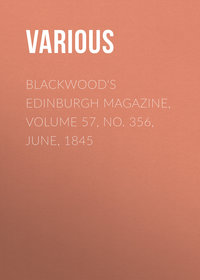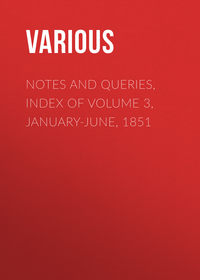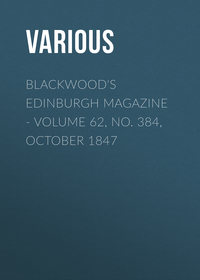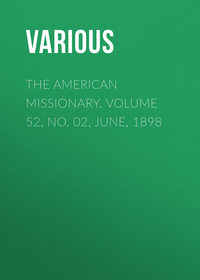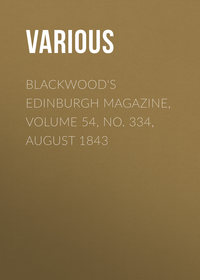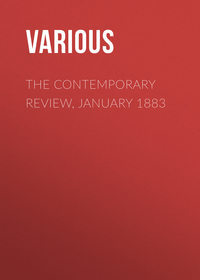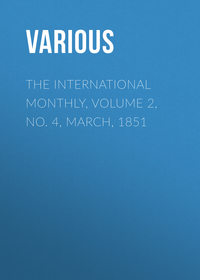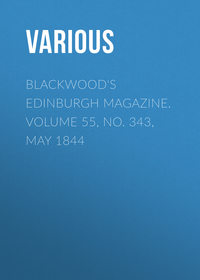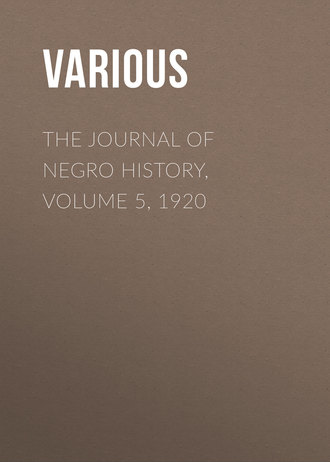 полная версия
полная версияThe Journal of Negro History, Volume 5, 1920
[28] Henry Scadding's Toronto of Old, p. 296. Dr. Scadding, speaks of his "in former times" gazing at Amy Pompadour with some curiosity.
Miss Elizabeth Russell, sister of the Administrator, had a slave, a pure Negro Amy Pompadour, whom she gave to Mrs. Denison wife of Captain John Denison, an old comrade in arms of her brother's.
484
Ibid., p. 292. The boy if he had stolen his master's money would be guilty of grand larceny, a capital offence at the time and consequently not tried at the Quarter Sessions. He was, therefore, recommitted to prison to await the Court of Oyer and Terminer and General Gaol Delivery commonly called the Assizes.
The master probably withdrew the charge against the girl and Coachly, or they may have been so fortunate as that there was no evidence against them.
485
See the lists in the Ont. Hist. Soc. Papers (1901), Vol. 3, pp. 9 sqq.
In the list of marriages are found: "1797, Oct. 12, Cuff Williams and Ann, Negroes from Mr. C. McNabb"; "1800, Dec. 1, Prince Robinson and Phillis Gibson, Negroes" and six other marriages down to 1831 between persons "of Colour". These last were probably not slaves.
That Joseph Brant "Thayendinaga," the celebrated Indian Chief, had Negro slaves has been confidently asserted and as confidently denied. That there were Negroes in his household seems certain and their status was inferior. Whether he called them slaves or not, it is probable that he had full control of them.
See Stones' Life of Brant, New York, 1838. He rather boasted of his slaves. He was attended on his journeys and at table by two of them, Patton and Simon Gauseville. Hamilton in his Osgoode Hall, Toronto, 1904, says (p. 21): "Thayendinaga lived surrounded with slaves and retainers in barbarous magnificence at Burlington." But that is rhetoric.
486
Trans. Can. Inst., Vol. 1 (1889-1890), p. 105.
487
Dr. Scadding ut supra, p. 295. This is almost the only trace of Panis slavery in Upper Canada, proper, which I have found. The attempt to make a crime by the advertiser is not without precedent or imitation: it was, however, merely a threat and a brutum fulmen.
488
Dr. Scadding ut supra, pp. 294, 295.
Such advertisements as these of 1802 indicate an uneasiness as to the security of the slave property. Dr. Scadding remarks "Cash and lands were plainly beginning to be regarded as less precarious property than human chattels," ibid., p. 295.
489
See supra, p.
490
Trans. Can. Inst., ut supra, p. 106.
These if actual slaves could not have been very young. If they were brought into the province after the Act of 1793 they would become free ipso facto. If born after that Act they would not properly speaking be slaves at all but only subject to service until the age of 25.
If they were slaves they must have been at least 37 in 1830; but probably they were born after 1793 and had not attained the age of 25 in 1833. They might then be young as described by Sir Adam.
491
Labadie had been twice married.
492
For "Panise."
493
The French Minot is 39.36 litres; the Canadian 36.34 litres or 63.94 pints—the bushel is 64 pints—the Canadian minot is consequently almost exactly one bushel.
494
Essex Historical Society—Papers and Addresses, Vol. 1, Windsor, Ont. (1913), pp. 13, 39, 48-52.
This is translated thus: I certify that I have sold and delivered to Mr. Labodie a Panis slave called Manon for and in consideration of 80 minots (practically 80 bushels) of wheat which he is to pay me as he has it the coming spring—given under my hand at Detroit this 10th day of October, 1775.
Witness: (Signed)
(Signed) John Porteous. James Sterling."
495
The fact was that Jack York had broken into McKee's dwelling house to commit rape and he had committed rape on the person of Mrs. Ruth Sufflemine (or Stufflemine).
Powell's report is dated from Mount Dorchester, September 22, 1800. Canadian Archives, Sundries U.C. 1792-1800; Hunter's decision in May is in Canadian Archives Letters Hunter to Heads of Departments, p. 65; York's escape is ibid., p. 84; the Death Warrant is referred to in Canadian Archives Sundries U.C. 1792-1800.
There were certainly slaves in the Western District. The will of Antoine Louis Descomps Labadie made May 26, 1806, contains a bequest "I also give and bequeath to my wife Charlotte, the use or service of two slaves that she may select as long as she continues to be my widow." "A black boy slave to Mrs. Benton, widow of the late Commodore of the Lakes" seems to have been as bad as Jack York. Convicted at Kingston of a house robbery, a capital crime he had the "benefit of clergy" that is, set free as a first offence. But he did not mend his ways. He committed burglary and was convicted at Kingston 1795 before Mr. Justice Powell. The judge sentenced him to be hanged but recommended a pardon. He said the boy was said to be 17 but looked no more than 15 and in view of his education as a slave he hoped that his "would not be the first capital example." Can. Arch., B. 210.
496
In a memorial by the judges of the Court of King's Bench to the Lieutenant Governor, January 10, 1814, they point out that prices have doubled since the war. The prices before the war and at the time were of bread 1/ and 2/; of beef 6 d and 1/; of wood 7/6 and 15/.
497
Before 1772, this was not a crime at all but only a civil trespass; the Waltham Black Act (1722) 9 George I, c. 22 made it a felony punishable with death without benefit of clergy. This continued to be the law in England until the Act (1827) 7, 8 George IV, c. 27 (Imp.), and in Upper Canada until 1841.
498
Sir Peregrine Maitland.
499
Banishment existed as a punishment in Upper Canada until 1841, when it was finally abolished and succeeded by imprisonment. Banishment was a very common alternative for hanging. I have counted as many as four cases at one assize.
500
The tradition is a floating and rather indefinite one. It has some plausibility but there is nothing which to my mind can be dignified by the name of proof. The facts of the Turner case will be found in a Report by Mr. (afterwards Chief) Justice Powell to Sir Peregrine Maitland's Secretary Edward McMahon, November 1, 1819, Canadian Archives, Sundries, U.C., 1819.
501
Canadian Archives, Q. 324, pp. 432, 436 Letter, June 8, 1818, from "Thos. N. Stewart, Capt. H. P. late Royal Newfoundland Regiment" to the Right Honourable Earl Bathurst, dated from Barnstable, North Devon.
Turning to a more pleasant subject, while it may not be strictly within the purview of this treatise, it may be permitted to bring to light from the files of the Canadian Archives a story of a poor black woman who showed true humanity. It may be considered by some at the expense of her patriotism. That will not be admitted by everyone, for what share did the Negro have in America in which he lived more than in Britain which offered him freedom?
When in May, 1813, General Dearborn took Fort George in Upper Canada, one of his prisoners was Captain Thomas N. Stewart of the Royal Newfoundland Regiment who was wounded. Taken to the United States, he was with several other British officers kept for months a close prisoner at Philadelphia as a hostage under the retaliation system.
"At length," said he, "I with fourteen other officers made my escape from the prison at Philadelphia by sawing off the iron bars with the springs of watches, but from the active search which was made ten of my companions were retaken in the course of three days. I … attribute my success (as well as that of two more British officers) in being enabled to elude the vigilance of the enemy to the kindness and humanity of a poor black woman to whose protection we committed ourselves in our real character and situation: and notwithstanding a reward of one hundred dollars was offered for the apprehension of each officer without our even being able to reward her in an equal degree, she persevered in affording us comfort and accommodation, greatly to her own risk and loss by the total resignation of her small hut and a tender of her services to our use visiting us only at night with provisions, &c. This she continued to do for eight days. When it was thought that the active search was in a great degree abated I ventured by night to leave the abode of this black woman with the intention of going to the Headquarters of the British Army in Canada and this I ultimately succeeded in accomplishing."
His companions leaving one by one at different times also succeeded in returning to the service of their country. Having only $70 and having to travel 600 miles, Capt. Stewart could give the woman only $20: and all she received from all the officers was only $50. He wrote Earl Bathurst, Secretary of State for War and the Colonies asking that she should be remunerated and saying that he would "be most happy to give the address and the source thro' which communication could be made."
Bathurst replied June 13, asking for particulars, and Captain Stewart June 18 wrote again on the eighteenth of June saying that the matter required the utmost circumspection and excusing himself from giving information until he had communication with America, hoping to point out the precise object whom "His Lordship has thought worthy of remuneration." No doubt the matter then passed into the Secret Service, as no further correspondence is preserved in documents open to the public.
[46a] The motion was heard in Trinity Term, 34 Victoriae i.e. in February, 1871, see the report in 31 Upper Canada Queens Bench Reports, p. 182: Harris v. Cooper. The Court was composed of the Chief Justice William Buell Richards, afterward Sir William Buell Richards, Chief Justice of Canada, Mr. Justice Joseph Curran Morrison, afterwards a Judge of the Court of Error and Appeal, and Mr. Justice Adam Wilson, afterwards successively Chief Justice of the Court of Common Pleas, and of the Court of Queen's Bench.
502
Two years after her first husband's death, that is, in 1853, the widow who had then married one Scott sold the lot to Mr. Boomer for $300. Mr. Boomer sold two acres to Edward Osborne and he to Cooper for $800. By 1871 the land had appreciated in value so as to make it worth a lawsuit. Of course, the widow never had any right to sell the land, but it was at least ungracious for her son to repudiate her deed.
503
The law of Virginia as to marriages of slaves even with the consent of the master was fully and clearly stated by the Court of Appeals of Virginia in the case of Scott v. Raub (1872) 88 Virginia, 721. See also the decision of the Supreme Court of the United States in the case of Hall v. United States, 92 U. S. 127; and in Alabama, Matilda v. Gardner, 24 Alabama, 719.
504
31 Upper Canada Queens Bench Reports at p. 195, 1871.
505
The first Fugitive Slave Law was passed by the United States in 1793. Three years afterwards occurred an episode, little known and less commented upon, showing very dearly the views of George Washington on the subject of fugitive slaves, at least of those slaves who were his own.
A slave girl of his escaped and made her way to Portsmouth, N. H.; Washington on discovering her place of refuge, wrote concerning her to Joseph Whipple the Collector at Portsmouth, November 28, 1796. The letter is still extant. It is of three full pages and was sold in London in 1877 for ten guineas. (Magazine of American History, Vol. 1, December, 1877, p. 759.) Charles Sumner had it in his hands when he made the speech reported in Charles Sumner's Works, Vol. III, p. 177. Washington in the letter described the fugitive and particularly expressed the desire of "her mistress" Mrs. Washington for her return to Alexandria. He feared public opinion in New Hampshire for he added.
"I do not mean by this request that such violent measure should be used as would excite a mob or riot which might be the case if she has adherents; or even uneasy sensations in the minds of well disposed citizens. Rather than either of these should happen, I would forego her services altogether and the example also which is of infinite more importance."
In other words if the slave girl has no friends or "adherents" send her back to slavery—if she has and they would actively oppose her return, let her go—and even if it only be that "well-disposed citizens" disapprove of her capture and return let her remain free.
506
Whitney's first patent was 1784. His rights were firmly established in 1807.
507
Landon, Canada's Part in Freeing the Slave, Ontario Historical Society, Papers, etc. (1919), quoting Birney's James G. Birney and His Times, p. 435.
Mr. Landon's paper is of great interest and value and I gladly avail myself of the permission to use it.
508
A fairly good account of the Underground Railroad will be found in William Still's Underground Railroad, Philadelphia, 1872, in W.H. Mitchell's Underground Railway, London, 1860; in W.H. Siebert's Underground Railway, New York, 1899, and in a number of other works on Slavery. Considerable space is given the subject in most works on Slavery.
One branch of it ran from a point on the Ohio River, through Ohio and Michigan to Detroit; but there were many divagations, many termini, many stations; Oberlin was one of these. See Dr. A.M. Ross, Memoirs of a Reformer, Toronto, 1893, and Mich. Hist. Coll., XVII, p. 248.
509
The Buxton Mission in the County of Kent is well known. The Wilberforce Colony in the County of Middlesex was founded by free Negroes but they had in mind to furnish homes for future refugees. See Mr. Fred Landon's account of this settlement in the recent (1918) Transactions of the London and Middlesex Hist. Soc., pp. 30-44. For an earlier account see A. Steward's Twenty Years a Slave (Rochester, N.Y., 1857).
510
"The Kingdom of Heaven suffereth violence and the violent take it by force." There can be no doubt that the Southern Negro looked upon Canada as a paradise. I have heard a colored clergyman of high standing say that of his own personal knowledge dying slaves in the South not infrequently expressed a hope to meet their friends in Canada.
511
Souvenirs of the Past, by William Lewis Baby, Windsor, Ontario, 1896. Mr. Baby is a member of an old French-Canadian family of the highest repute for honor and public service. Charles Baby was the author's brother. The author lived with him and tells the story of his own knowledge. The quotations are from Mr. Baby's book.
512
As was done in the case of Solomon Mosely, spoken of infra, p.
513
I have not been able to verify other tales of attempted abduction to my satisfaction, there are, however, several stories which may be true.
514
Canadian Archives Sundries, U. C., 1819.
515
John Beverley Robinson was the son of Christopher Robinson mentioned above.
516
The same rule obtained in Lower Canada; (1827) re Joseph Fisher, 1 Stuart's L. C. Rep. 245.
517
This is the Act (1833), 3 Will IV, c. 7 (U. C.). This statute came forward as cap. 96 in the Consolidated Statutes of Upper Canada, 1859, but was repealed by an Act of (United) Canada (1860), 23 Vic. c. 91 (Can.).
The Act of 1833 was drawn by Chief Justice Robinson and introduced by him into the Legislative Council of which he was Speaker—it was a "Government measure." Notice of bringing in the bill was given November 28, 1832; the bill brought in November 30; read the second time December 3 passed the committee of the whole on the fourth of December and was finally passed by the Council the following day. It reached the Legislative Assembly the same day where it was passed without opposition and received the Royal Assent February 13, 1833.
518
At the meeting were present His Excellency Sir John Colborne, K. C. B. Lieutenant Governor, the Hon. and Rev. John Strachan, D.D., Archdeacon of York, the Honorable Peter Robinson, the Honorable George Herchmer Markland, the Honorable Joseph Fells, and the Honorable John Elmsley. The Executive Council at that time was very much under the influence of the Chief Justice and Dr. Strachan, then Archdeacon afterwards the first Anglican Bishop of York or Toronto.
519
Robert Sympson Jameson an English barrister of the Middle Temple, a familiar friend of Coleridge and Southey and the husband of Anna Jameson of some literary note.
The report is from the Canadian Archives, State J., p. 137.
520
The Executive Council on September 7th 1837 recommended his extradition. The following is a copy of the Proceedings:
Executive Council Chamber at Toronto Thursday 7th September 1837
Requisition for Solomon Mosely
Read the Requisition of the Governor of the State of Kentucky and other documents relating to the surrender of Solomon Mosely a fugitive from the State of Kentucky charged with Horse stealing.
Read also the Attorney General opinion thereon as follows:
Attorney General's Office
Toronto 6th September 1837
Sir,
I have the honor to report that in my opinion there is sufficient proof of the guilt of Solomon alias John Mosely a fugitive from the State of Kentucky charged with horse stealing in that Country—to Warrant His Excellency the Lieutenant Governor (with the advice of the Executive Council) to deliver him up upon the request made by the Governor of the State referred to.
I have the honor to be &c(Signed) Cs Hagerman, Atty, GenJ Joseph Esq,
Civil Secretary.
The Council concur in the above opinion of the Attorney General and consider that the case comes within 3rd Wm 4 Ch 7 and therefore advise His Excellency the Lieutenant Governor to deliver up the Fugitive alluded to in the requisition of His Excellency the Governor of the State of Kentucky.
—Can. Arch. State J. Upper Canada, p. 595.In a despatch from Head to Lord Glenelg, October 8, 1837, Can. Arch. 398, p. 149, Head says: "In a case brought before me only a few days previous to that which is the subject of this communication (i.e., the Jesse Happy case) I insisted on giving up to the Governor of the Commonwealth of Kentucky (a slave) who in order to effect his escape had been guilty of stealing his Master's horse." It was suggested that the real object was to get him back to his Master—not to punish him for the crime. But the crime was perfectly proved and the Council followed the judicial opinion in the Thornton Blackburn case that as the black had been shown to have committed an offence clearly coming within the statute of 1833, they could not advise a course to be taken "different from that which should be pursued with respect to free white persons under the same circumstances." They, therefore, advised an order for extradition.
521
To his people he seems to have been known as "Hubbard Holmes" he is always called a "yellow man," whether mulatto, quadroon, octoroon or other does not appear.
522
The contemporary accounts of this transaction, e.g., in the Christian Guardian of Toronto, and the Niagara Chronicle, are not wholly consistent. The main facts are clear; although there is some doubt as to the time, the military guard were ordered to fire.
523
Present, Allen, Hon. Augustus Baldwin and Hon. William Henry Draper (afterwards Chief Justice of the Court of Common Pleas, 1856, Chief Justice of the Province of Upper Canada, 1863, and President of the Court of Error and Appeal 1868 till his death, 1877).
524
Canadian Archives State J., p. 597.
525
Canadian Archives, G. 84, p. 277. The letter to Sir George Arthur is ibid., G. 84, p. 275. The despatch from Lord Glenelg to Sir Francis Bond Head dated January 4, 1837, has endorsed on it a pencil memorandum "Jesse Happy has been liberated by Lieutenant Governor's command November 14, 1837," ibid., G. 83, p. 238.
526
Concluded at Washington, August 9, 1842.
527
It was held in the Province of Upper Canada that the Act of 1833 was superseded by the Ashburton Treaty in respect to the United States, but that it remained in force with respect to other countries (Reg. v. Tubber, 1854, 1, P.R. 98). Since the treaty our government has refused to extradite where the offence charged is not included in the treaty. In re Laverne Beebe (1863), 3 P.R. 273—a case of burglary. The provisions of the treaty were brought into full effect in Canada (Upper and Lower) by the Canadian Statute of 1849, 12, Vic. c. 19; C.S.C. (1859), c. 89.
528
The Chief Justice Sir John Beverley Robinson, Mr. Justice McLean (afterwards Chief Justice of Upper Canada) and Mr. Justice Burns.
529
The seat of the Superior Courts in Toronto, the Palais de Justice of the Province.
530
Mr. Samuel B. Freeman Q.C., of Hamilton, a man of much natural eloquence, considerable knowledge of law and more of human nature; he was always ready and willing to take up the cause of one unjustly accused and was singularly successful in his defences. I have heard it said that it was Mr. M.C. Cameron, Q.C., who so addressed the gathering but he does not seem to have been concerned in the case in the Queen's Bench.
531
The case is reported in (1860) 20 U. Can. Q.B., pp. 124-123. The warrant is given at pp. 192, 193.
532
The case is reported in (1861) 3 Ellis & Ellis Reports, Queen's Bench, p. 487; 30, Law Jour., Q.B., p. 129; 7 Jurist N.S., p. 122; 3 Law Times, N.S., p. 622; 9 Weekly Rep., p. 255.
It was owing to this decision that the statute was passed at Westminster (1862) 25, 26, Vic. c. 20, which by sec. 1 forbids the courts in England to issue a writ of habeas corpus into any British possession which has a court with the power to issue such writ. The Court was Lord Chief Justice Cockburn and Justices Crompton Hill and Blackburn, a very strong court. The Counsel for Anderson was the celebrated but ill-fated Edwin James. The writ was specially directed to the sheriff at Toronto, the sheriff at Brantford and the jail keeper at Brantford. Judgment was given January 15, 1861.
533
Common Law of course, not Chancery.
534
The court was composed of Chief Justice William Henry Draper, C.B., Mr. Justice Richards, afterwards Chief Justice successively of the Court of Common Pleas, of the Court of Queen's Bench and of the Supreme Court of Canada and Mr. Justice Hagarty, afterwards Chief Justice successively of the Court of Common Pleas, of the Court of King's Bench, and of Ontario.
Mr. Freeman was assisted in this argument by Mr. M.C. Cameron, a lawyer of the highest standing professionally and otherwise, afterwards Justice of the Court of Queen's Bench and afterwards Counsel for the Crown on both arguments were Mr. Eccles, Q.C., a man of deservedly high reputation, and Robert Alexander Harrison, afterwards Chief Justice of the Court of Queen's Bench, an exceedingly learned and accurate lawyer.




